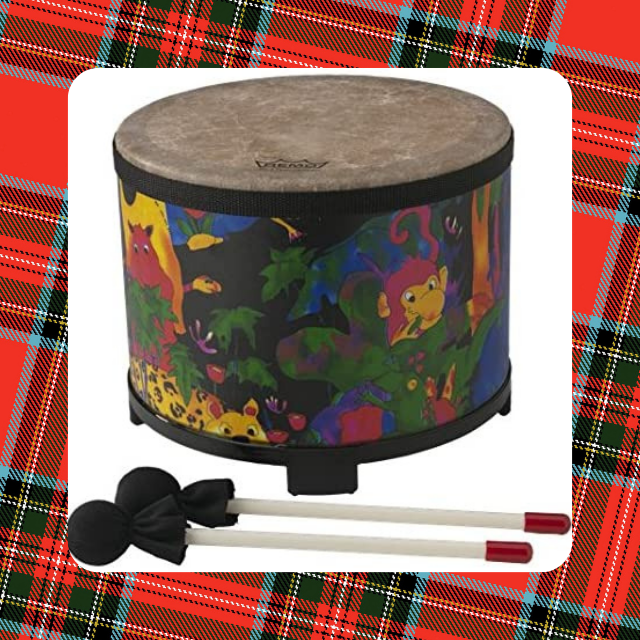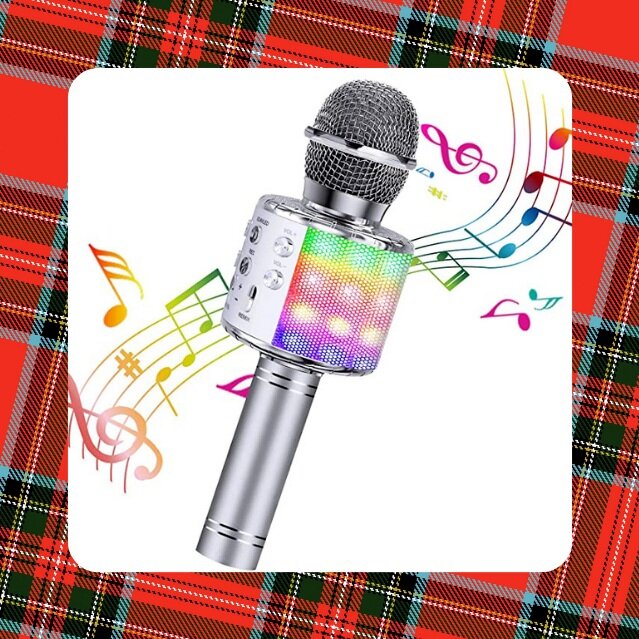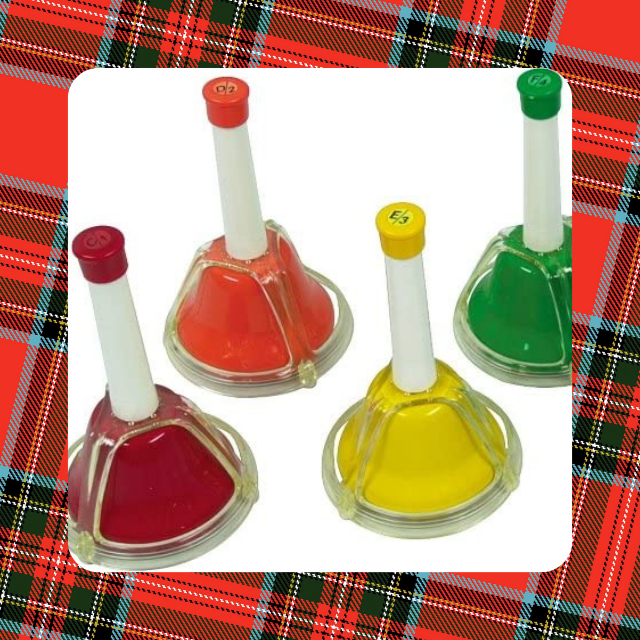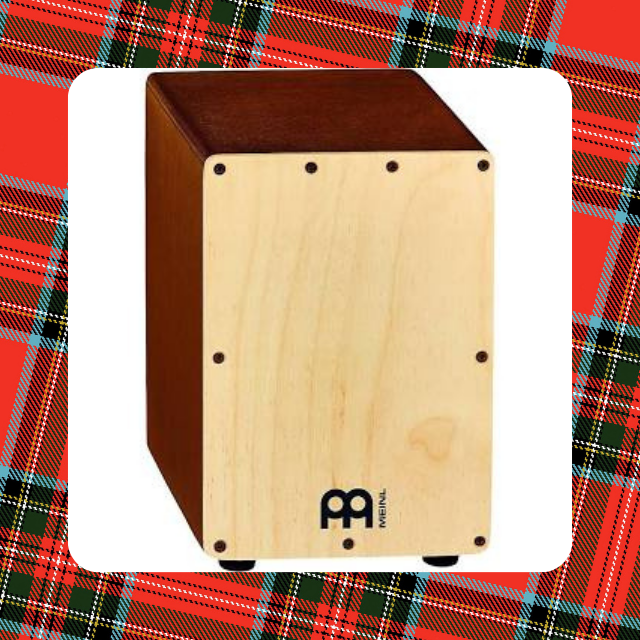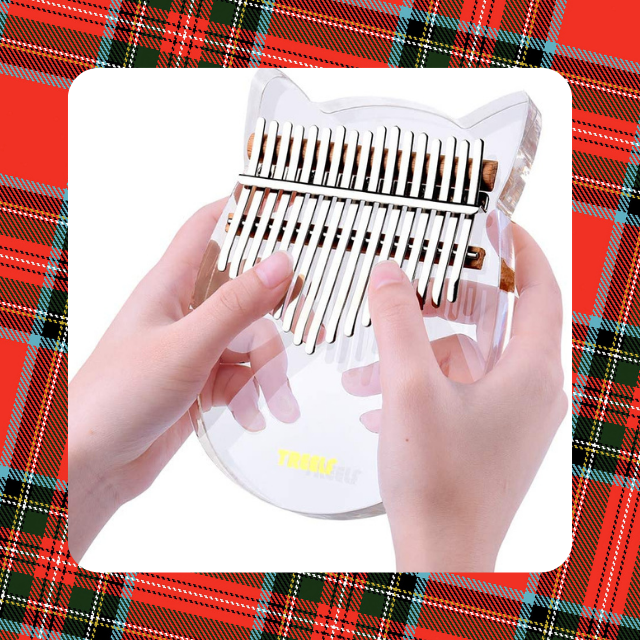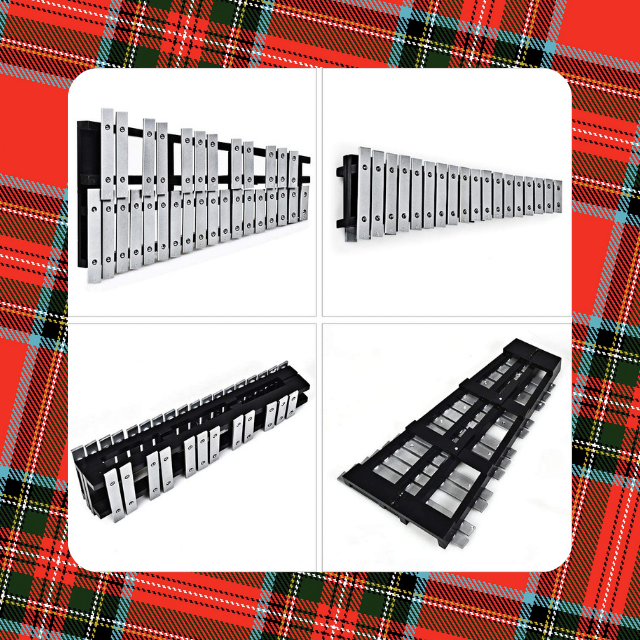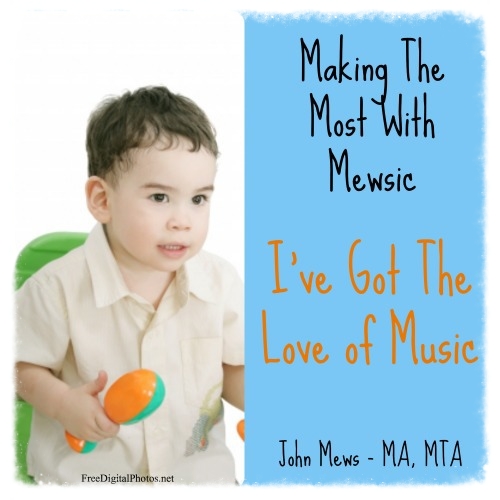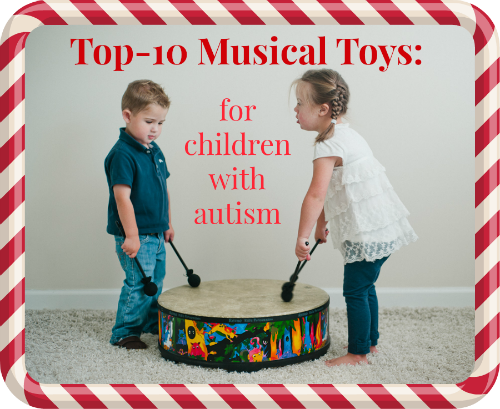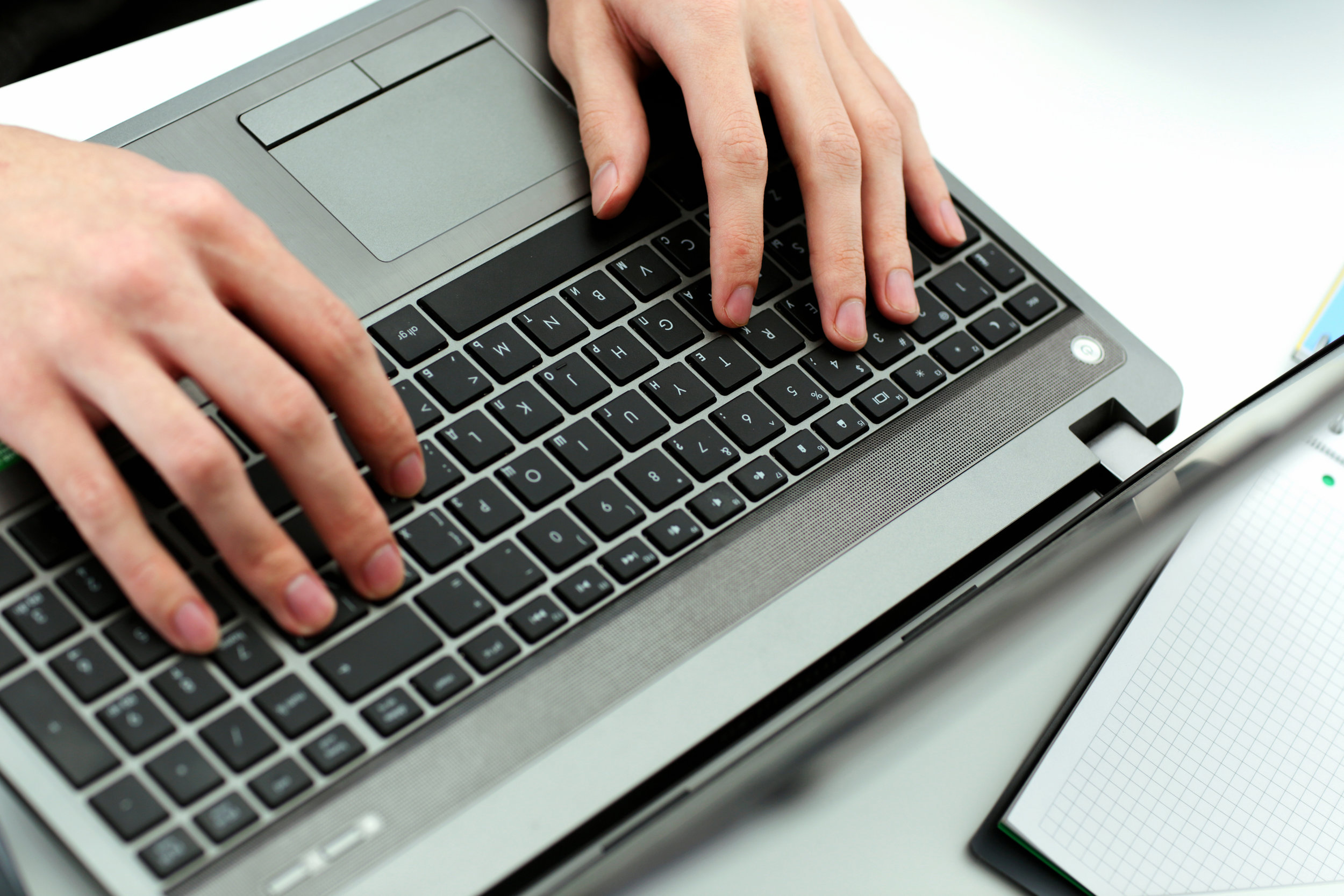
BLOGS
Educational blogs for parents and professionals
Top 11 Therapeutic Musical Toys for Children With Special Needs
After writing my first top therapeutic toy blog back in 2014 “TOP 10 MUSICAL TOYS FOR CHILDREN WITH AUTISM”, it has become the number one most read blog and resource in my entire list! So it's time for an update!
I get multiple emails and questions directly from parents and therapists all the time asking how they can use their instruments at home as a therapeutic tool or what instruments they should buy to help with their child/clients therapeutic goals.
This is the time of the year when many families and friends struggle with what toys or gifts to give to their little ones and what a better way than to get them something that is both fun and therapeutic.
These are the top 11 favorite instruments that I use in my sessions that continues to offer so much therapeutic value, fun, engagement and overall success in each of my clients therapy goals.
1 - Floor Drum
Drums vary as much in price as they do in shapes and sizes, sounds and color! I use many varieties of drums in my sessions but I want to share this specific remo drum with you. This drum is sturdy, strong and has great acoustic sounds and vibration. This drum can sit easily on the floor and be played individually or together with 2 or 3 friends as a gathering drum. Oh, and did I mention it's affordable?!
Drums can help support:
Impulse Control
Eye-Hand Coordination
Turn-Taking
Focus and Attention
Auditory Skills
Regulation Skills
In a group it can help with social-emotional goals, non-verbal social cues and skill development
For more details click here
2 - Karaoke Microphone
Microphones can be so much fun to work on multiple goals from speech and language to increasing self-esteem. I prefer using microphones where you can manipulate the sounds to keep my clients engaged in the music process, to keep it fun and therefore better engagement and participation in achieving the therapeutic goals.
Microphones can help support:
Speech and Communication Skills
Self-Esteem
Social-Emotional Development
Creative Expression
Social Cues and Skills
For more details click here
3 - Shakers
Shakers are a staple in my music therapy instrument options. Shakers are always a fun welcome to any music activity in my clients sessions. Shakers and maracas are interchangeable in most of my sessions.
Shakers can help support:
Social Skill Development
Gross and Fine Motor Skills
Eye-Hand Coordination
Educational Goals - colors, counting, etc.
For more details click here
4 - Lollipop Drum
These drums are a favorite choice for many of my younger clients. I choose the lollipop drums as they are very light weight and have a handle to help guide or sustain more controlled movements in my music therapy sessions.
The Lollipop drum can help support:
Eye-Hand Coordination
Gross Motor Skills
Visual Perception and Eye Tracking
Regulation Skills
Social Skills and Cues
Joint Attention and Play
For more details click here
5 - Bells
I had an intern many years ago that introduced these bells to me and I have used them ever since. Children love these bells as they are colorful and you can play them both by ringing them or tapping the top of the handle.
Bells can help support:
Early Reading Skill Development
Educational Goals - colors, counting and letter recognition
Early Music Education
Social Skills
Focus and Attention
For more details click here
6 - Steel Tongue Drum “Happy Drum”
This is a new addition to my instrument collection and a favorite by clients of all ages. This drum sits on your lap and is easy to play as the tones are in a tonal scale that is always in harmony as you play.
Tongue drums can help support:
Mindfulness
Meditation
Regulation skills
Social - Emotional skills
Eye-Hand coordination
Self-Expression
For more details click here
7 - Cajon
The cajon is also a new addition to my musical toolbox. This is such a fun instrument for all ages; children love the idea of sitting on an instrument and being able to play it in a variety of ways and feeling the rhythmic vibrations throughout their body. The cajon is a beautiful strong instrument and comes in various sizes. I prefer the larger sizes that can comfortably allow both my older adult clients as well as my younger clients to safely sit on it and play.
Cajon’s can help support:
Self-Expression
Eye-Hand Coordination
Social Cues and Skills
Self Regulation
Gross and Fine Motor Skills
For more details click here
8 - Kalimba
The kalimba is also known as a marimba and used in many African musical cultures creating a beautiful melody by plucking the metal keys with your thumbs and fingers. This instrument is very easy to play and has beautiful relaxing tones.
Kalimba can help support:
Fine Motor Development
Self-Expression
Meditation and Mindfulness
Emotional and Self-Regulation
Eye-Hand Coordination
For more details click here
9 - Xylophone
The xylophone is a staple instrument in my music therapy practice for children especially and adults alike. The xylophone is a great choice as it is transportable, affordable, mimics the notes of a piano, and versatile. Xylophones also come in a variety of sizes, materials and colors. For younger children I like to buy those with bright colors to make it more fun, but the one I’m choosing this year is a “collapsable” xylophone which makes for easy carrying and storing. I also tend to put colored stars on the xylophone to help with early music education skills.
Xylophones can help support:
Early Music Education
Eye-Hand Coordination
Gross Motor Skills
Social Cues and Skills
Impulse Control
Creative Expression
Focus and Attention
Bi-lateral Movements
For more details click here
10 - Ocean Drum
The ocean drum continues to be a favorite choice for many of my younger clients. Children often love to have the control of creating their own dynamics from loud to soft wave like sounds as well as enjoying the visuals of the beads moving about in the circular drum.
Ocean drums can help support:
Focus and Concentration
Gross Motor Skills
Mindfulness and Meditation
Self-Regulation
Impulse Control
Social Cues and Skills Within Groups
For more details click here
11 - Kazoo
The kazoo is such a fun and inexpensive instrument and therapeutic tool! Kazoo’s come in many different colors and materials. For those of you who have played a kazoo you are aware that it doesn’t work by just blowing into the instrument. Your vocal cords are required to make a vibration and buzzing type of sound which is a rudimentary skill in initial speech and language goals. I use kazoo’s with many young children that are working on their initial speech goals through helping produce breath support and to engage the vocal cords into initial vocalizations and furthermore speech development.
Kazoo’s help support:
Breath Control
Speech and Communication goals
Speech production
Self-Regulation
Creative Self-Expression
For more details click here
I hope you find these 11 instruments helpful in bringing some of the therapeutic benefits of music with your children whether in your home or office. Please feel free to reach out to me if you have any questions about the appropriateness of a particular instrument for your child or client. If you are not working with a music therapist already, in most cases I can refer you to a qualified therapist in your area that can support your child’s developments through music therapy.
If you have any questions about any instruments that you currently have and how they can be used for therapeutic purposes please don’t hesitate to reach out to me as I’d love to support you and your child.
John Mews, BMT, NMT, AMFT
Founder & Owner - Mewsic Moves
email: john@mewsicmoves.com
Happy Holidays Everyone! Give the gift of music this year.
Let’s Be Social:
Please like, share and or leave your comments below as we love to hear form you!
How Music Therapy Interventions Can Address the Culture of Bullying
Image Link: https://pixabay.com/photos/children-musical-instrument-music-246847/
Image Source: Pixabay
In recent years, the conversation on how to curb bullying has been fruitful and productive. However, it remains a persistent phenomenon today, especially among children.
Bullying involves acts showing hostile intent predicated on power imbalance, which takes different forms like provocation and intimidation. A recent study from the National Center for Education Statistics found that one in five students between ages 12 and 18 have experienced bullying. The study also found that the intimidation tactics have increasingly taken the form of online or text harassment—around 15% of bullied students have reportedly experienced this.
Bully prevention strategies are crucial for schools and other supposedly safe spaces where children learn. The act of being bullied leads to stress, distress, and anxiety. Researchers from King's College London in the United Kingdom even uncovered that bullying has long-term effects on children. The study found that children who experience bullying have higher risks of mental health illnesses and hampered brain development. Indeed, Maryville University highlights that there are fundamental connections between mental health and learning abilities, and the two affect each other in more ways than we realize. Bullying has many long-term impacts, and chief among them is how it can impair a child’s capacity to learn.
Music as a prevention strategy
Bullying is a complex issue, especially with children. It encompasses the social, economic, structural, and psychological dimensions of upbringing. As a social relationship, bullying is harmful both for the victim as well as the bully. This is why prevention strategies being used are often intertwined and comprehensive.
A landmark study from the University of Minnesota in 2013 found that music therapy can be used as an effective intervention for both bullies and victims. While the longitudinal study focused on gender-based bullying, it showed how exposure to music and interaction mediated by instruments helped in easing negative dynamics among children. By exposing them to feminine-masculine types of music and instruments, the music therapy improved peer relations and self-management.
How does it work?
Music therapy is widely prescribed for many use cases. From pain management and anxiety relief to helping reduce the impacts of trauma and helping recovery, music therapy is seen as an effective alternative mediation for many conditions. As an intervention strategy, music therapy works towards multiple goals including cultivating social skills, regulating emotions, and diffusing toxic behaviors. It can also help children adjust after their non-structured summer vacation, when it’s time to go back to class again.
Music helps children develop their self-expression and socialization process. This is why it’s effective in directing and shaping social behaviors. For reducing bullying behaviors, music therapy is targeted at taking out aggressive behaviors and dis-incentivizing cliques. Psychologists from the University of Pretoria subjected students to music therapy and measured the changes in aggressive behaviors among students. The study found that music intervention, elicitations like drumming and song writing in particular—are effective in decreasing hostile behaviors.
Choosing a method
One of the key characteristics of music therapy as an intervention is its flexibility. It’s an inexpensive but efficient way to deal with multiple goals including reducing bullying behaviors. Choosing an apt method would entail extensive goal setting in reducing bully behavior at school.
When used for children, music therapy often contain elements that are familiar to the students. More passive methods like music reminiscence and stimulation can encourage relaxation and socializing. Meanwhile, more active methods are more targeted. Singalong is a highly social method as it encourages participation in a collective setting. It’s a fun way to let them create more trust towards their peers.
Song writing and learning instruments are more advanced methods. By way of teaching skills, children learn introspection and benefit from peer learning. Incorporating classmate feedback sessions can encourage openness among children.
The potential of music therapy as an effective anti-bullying intervention program hinges on its impact on children’s overall development. The culture of bullying won’t go away in a flash, but the active engagement of children against it can be done one note at a time.
Exclusively written for MewsicMoves.Com
By: Leila Alayna
John Mews, Owner, Founder and Neurologic Music Therapist at Mewsic Moves is also trained in a social and emotional skill building drum facilitation program, “Beat The Odds® ” that utilizes drumming and rhythm to help children, teens as well as adult to connect to one another, improve attention, reduce anxiety and improve social skills throughout greater Los Angeles.
In this program development, researchers at UCLA have shown that,
Beat the Odds® can significantly improve a spectrum of behavior problems in children, such as inattention, withdrawn/depression, post traumatic stress, anxiety, attention deficit/hyperactivity, oppositional defiance, and sluggish cognitive tempo (Ho, Tsao, Bloch, & Zeltzer, 2011).
For more information on Beat the Odds® go to: https://uclartsandhealing.org/services/professional-development/beat-the-odds-drumming-program/
I also want to extend a special thank you to Leila Alayna for this special guest blog article.
Lets Be Social
Top 10 Musical Toys For Children With Autism
This is the time year most people are out shopping for things to put under the Christmas tree. This can be an especially challenging time for parents of children with Autism. So many of the available toys are far too over-stimulating for these children
Over the years parents have asked about buying musical instruments for their child. I think these make great gifts, because they help the child engage in music making at home, which helps to reinforce what was learned during the music therapy session.
Here are my top ten musical instruments I recommend for children with Autism. For each one, I explain how the instrument can be utilized in a therapeutic and beneficial way. What a great dual purpose, a toy that’s also beneficial therapeutically! ( you can also click on each image or title for more information on the instrument).
1. Ukulele
The small size of the ukulele makes it great for small children and adolescents. It’s lightweight and narrow neck make it easy for the child to grasp. I find the Ukulele is useful for fine motor control when picking or strumming. You can also work on gross motor control if you rock the arm up and down to create strumming patterns. The Ukulele is also great for working on eye-hand coordination.
2. Recorder
Recorders are very popular with children and come in many colors. I often use this for language and speech development, primarily to aid in breath support and control. The recorder is also useful for working on fine motor skills that are needed to create different tones on the instrument.
I enjoy using the Sound Shapes®, because they are colorful, fun and come in different sizes, shapes and sounds. Sound Shapes® are easily stacked they don’t take up much room like most other stand-up drums and they are lightweight. The Sound Shapes® can provide therapeutic value in supporting eye-hand coordination, impulse control and to provide controlled sensory input.
4. Hand bells
Hand-bells come in various sizes and price ranges. I like these because they have a smaller scale (8 notes), are less expensive then others, and are quite durable. They are useful for developing fine motor skills, since you can simply press the top with your finger to make a sound. You can also use them to develop gross motor skills if you pick them up and ring them. I often use these to increase reading skills as well. I create color-coded music, which the child “reads” by playing the correctly colored bell. This also helps with visual tracking skills.
5. Cabassa
Cabassas come in various sizes. I prefer to use the larger ones, particularly if I want to use sensation and movement in my therapeutic approach. The weight of the cabassas can be useful for grounding a child, and you can roll the cabassa on the child’s arm, legs or back to create different sensations. A word of caution here – you should practice on yourself before using it on the child so that you know to use the right amount of pressure. The cabassa also can be useful for fine and gross motor skills, as well as visual and auditory stimulation when you roll it around and around.
6. Melodica
I often use the Melodica to support a child’s fine motor skills, breath control and eye-hand coordination. This is a less expensive option to purchasing a piano or keyboard.
7. Ocean Drum
Of all the drums I use in my practice, the Ocean Drum is by far the most popular. This drum comes is different sizes and colors. I prefer the ocean drum with fish inside, since it provides added visual stimulation. This instrument can be used to aid with relaxation, grounding, sensory-input, gross motor and impulse control. The sound of the ocean drum ranges from a loud crescendo of crashing waves to the gentle white noise of the sea foam bubbles dissipating on the warm sand.
8. Castanets
Castanets are fun, small and the least expensive instrument that most children love to play, mainly because they are touch-responsive. I have used this instrument to help children slow down from a fast paced-rhythm to a slower more regulated rhythm. This can be used as an auditory cue for children to understand their current energy levels and how they can learn to self-regulate. This instrument is also useful for developing fine motor skills, particularly for differentiating between using and isolating different finger movements.
I recommend buying a less expensive keyboard for therapeutic use. Children particularly seem to enjoy keyboards whose keys that light up as they are played. I use keyboards to help with fine motor skills, as an outlet to help children be creative and have fun on their own without direct instruction. Make sure your keyboard has a record button so your child can record their creative masterpieces and play it back. This helps them to feel good about their accomplishments, and allows them to share their work with others. This is particularly useful to enhance social skills and to promote sharing.
Like most of the instruments listed here, xylophones come in various sizes, colors and prices. For use at home I suggested something smaller, more colorful and less expensive. I prefer the wooden xylophones since they produce a lower-pitched sound, which helps to prevent over-stimulating a sensitive child’s auditory system. The xylophone can also help with a child’s eye-hand coordination, impulse control, gross motor skills as well as reading skills if you use color-coded music to match the notes on the xylophone.
I hope you find these list of instruments helpful in bringing some of the therapeutic benefits of music into your home. Please feel free to reach out to me if you have any questions about the appropriateness of a particular instrument for your child. If you are not working with a music therapist already, in most cases I can refer you to a qualified therapist in your area that can support your child’s development through music therapy.
This article has also been featured in this December issue of Autism Parenting Magazine.
Happy Holidays everyone!
Give the Gift of Music This Holiday Season!
Musically,
John Mews, BMT, MA, MFTI
john@mewsicmoves.com
www.mewsicmoves.com
Let's be social:
Please share, pin, like and leave your comments below as I love to hear from you!
The drum set every music therapist "must have"!
When I first began my music therapy practice over ten years ago, I carried around a small suitcase full of rhythm and percussive instruments. I also took with me a heavy hand-carved African djembe drum. I would often have a sore back at the end of a long day. I would often wish they made these things lighter!
And wishes often do come true. A few years later that I discovered Remo’s Sound Shapes®. These were a blessing to me as I'm sure they are to music therapists around the world! These are fun, colorful, stackable and light drums that you can carry under your arm. Oh, and they also come in packs of 6, so you are totally set up for a group.
I have used these drums in the following ways to support children with developmental disabilities.
- Pre-Reading Skills - Playing and matching colors from left to right.
- Gross-Motor Skills - Playing the drums and moving them from high to low and from left to right.
- Color Recognition - Reading and matching colors to each drum
- Social Skills - Taking turns, listening to each other and sharing drums with one another.
I have even created an early music education exercise to help children learn the fundamentals of music, music note value and colors with REMO Sound Shapes®.
I think you’ll find these drums very useful and easily portable in your music therapy sessions. I have used them primarily for children but I'm sure you can find them useful for all ages and populations.
For more details on REMO Sound Shapes® Click Here!
Remo also makes connectors that you can use to join the drums together to make a full drum set.
For more details on REMO Sound Shapes® connectors Click Here!
Here are other Remo products that I recommend:


